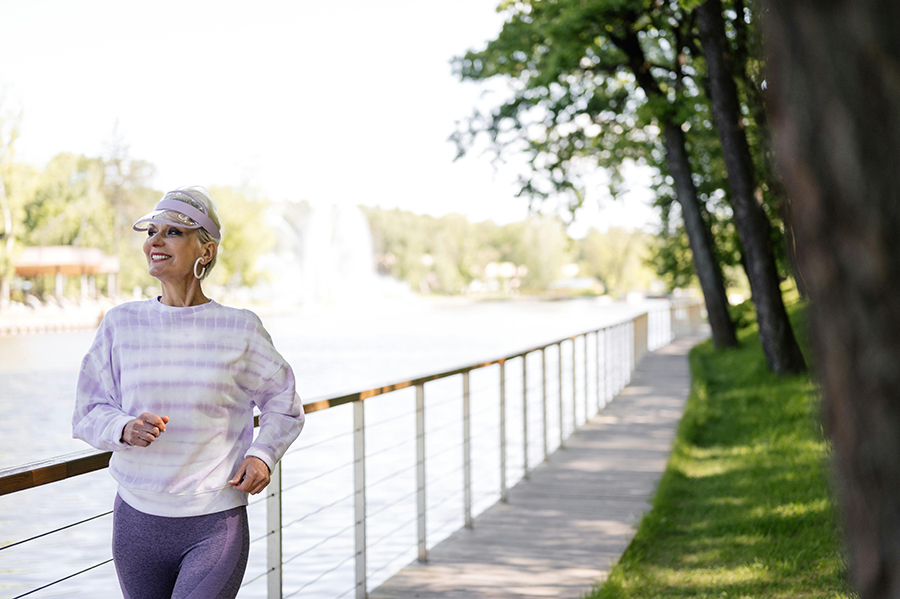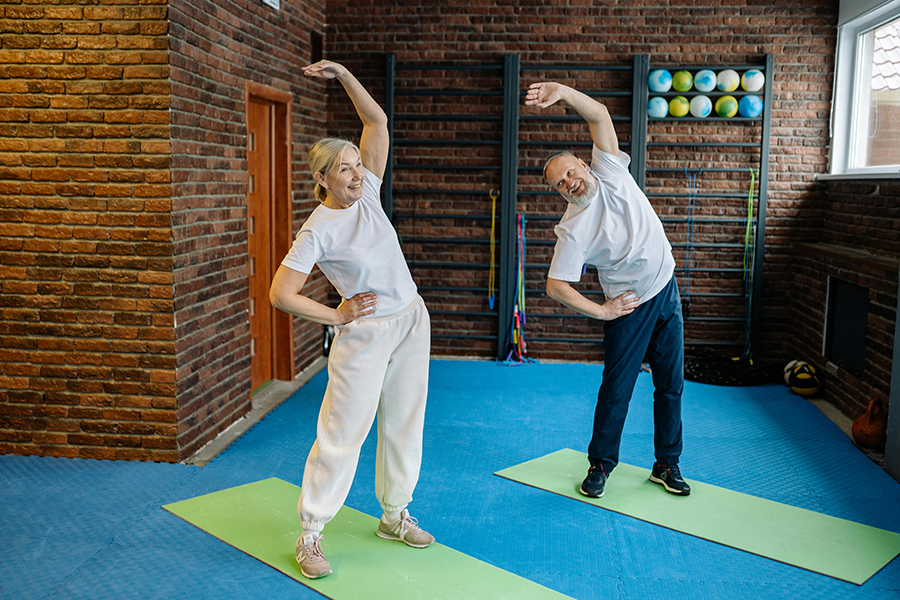Let’s investigate why properly warming up your muscles is key, and some tips on doing it correctly.

Warming up your muscles before exercise is one of the most important steps to protect your body from potential injury and feel ready for your workout. Proper warm-ups reduce injury risk, improve performance, and help your body transition smoothly from rest to activity. Taking just a few minutes at the beginning of your workout can help you feel ready, flexible, and confident for a good exercise. Be sure to talk with your doctor before starting a new workout routine.
Understanding What Warm-Ups Accomplish
Warm-ups increase your body temperature, making muscles more pliable and responsive to movement demands. Cold muscles behave more like stiff rubber bands that are not as pliable, flexible, or ready for movement, while warmed muscles move fluidly like elastic that stretches smoothly. This temperature increase improves muscle flexibility and reduces the likelihood of strains or pulls during your main workout activities.
Blood flow increases during warm-ups, delivering more oxygen and nutrients to working muscles while preparing your cardiovascular system for elevated activity levels. Your heart rate gradually rises rather than spiking suddenly, which creates smoother transitions that feel more comfortable and sustainable.
Start With Gentle Cardiovascular Activity
Begin every workout with a warm-up incorporating light cardiovascular movement that gradually elevates your heart rate and body temperature. Walking at a comfortable pace for three to five minutes provides an excellent warm-up for most exercise activities. This gentle movement wakes up your cardiovascular system while beginning the process of increasing blood flow to your muscles.
Marching in place, slow cycling on a stationary bike, gentle arm lifts without weights, or easy stepping movements all work well as warm-up cardiovascular activities. Choose movements that feel comfortable and natural for your body rather than pushing into challenging intensity levels during this preparatory phase.
Pay attention to how your body feels during these initial movements, noting any areas of stiffness or discomfort that might need extra attention during your warm-up routine. This body awareness helps you customize your preparation to meet your specific needs on any given day. You may notice that a longer warmup, like five to ten minutes, feels best for your muscles, or that warmup time varies depending on outdoor temperatures.
Incorporate Dynamic Stretching Movements
Dynamic stretches involve controlled movements that take your joints and muscles through their full range of motion without holding static positions. Arm circles, leg swings, torso twists, and walking lunges all represent effective dynamic stretches that prepare your body for exercise. These movements increase flexibility while maintaining the muscle warmth you’re building during your warm-up. They are different from static stretches meant to lengthen muscles, which should be done at the end of your workout once your muscles are at their warmest.
Start dynamic stretches with small, controlled movements and gradually increase the range of motion as your muscles warm up and loosen. Gentle is always better than aggressive during warm-ups, so take motions slowly and give your body time to adjust. You may find that starting with gentle cardio, like a walk, can help you transition into stretches to really help your muscles become pliable and warm.
Target the Muscles You’ll be Using the Most
When warming up, keep in mind the planned activity or workout you’ll be doing. If you plan on going to a spin cycle class, focus mostly on warming up your legs and lower back. A rowing class may require arm stretches and torso twists, while yoga may need some cardio to help warm your entire body. Try a few different ways of warming up and see what you like best.
Listen to Your Body’s Signals
Setting time aside for a warmup can allow you to feel in tune with your body’s signals and to note any stiffness or uncomfortable aches or joints. Pain, sharp discomfort, or unusual sensations during warm-ups signal that something needs attention rather than pushing through to your main workout.
Build Consistent Warm-Up Habits
Making warm-ups part of every exercise session creates healthy habits that serve your body well for years to come. Try incorporating a few different types of warm-up activities to see what works best for your body, and be sure to give yourself enough time to feel ready for your workout, whatever it may be. Visit the CapTel blog for more exercise ideas, tips, and tricks.


